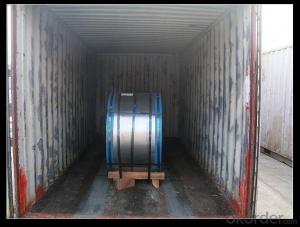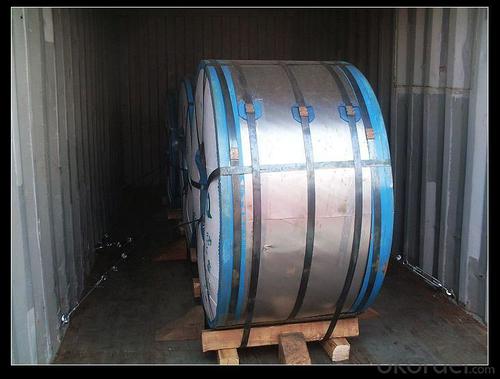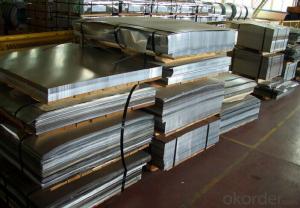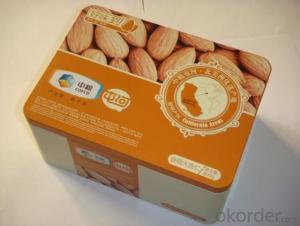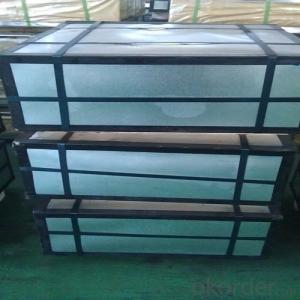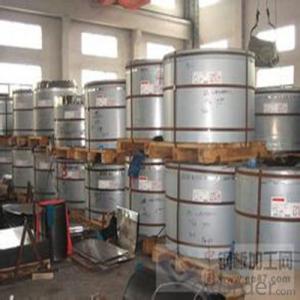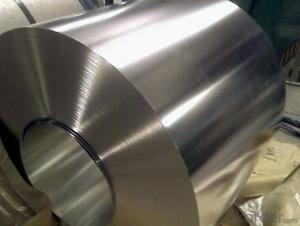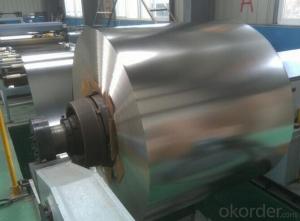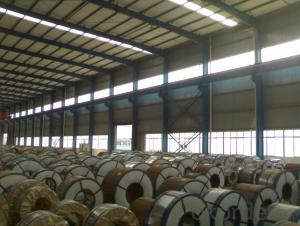Electrolytic Tinplate in Coils for Foods and Chemical Tin Cans Making
- Loading Port:
- Tianjin
- Payment Terms:
- TT OR LC
- Min Order Qty:
- 25 m.t
- Supply Capability:
- 7000 m.t/month
OKorder Service Pledge
OKorder Financial Service
You Might Also Like
1.Structure of Electrolytic Tinplate in Coils for Foods and Chemical Tin Cans Making Description
Electrolytic Tin Plate Coils and Sheets for Foods Metal Packaging, is one thin steel sheet with a coating of tin applied by electrolytic deposition. Tinplate made by this process is essentially a sandwich in which the central core is strip steel. This core is cleaned in a pickling solution and then fed through tanks containing electrolyte, where tin is deposited on both sides. As the strip passes between high-frequency electric induction coils, it is heated so that the tin coating melts and flows to form a lustrous coat.
2.Main Features of Electrolytic Tinplate in Coils for Foods and Chemical Tin Cans Making
Appearance – Electrolytic Tin Plate is characterized by its beautiful metallic luster. Products with various kinds of surface roughness are produced by selecting the surface finish of the substrate steel sheet.
Paintability and printability – Electrolytic Tin Plates have excellent paintability and printability. Printing is beautifully finished using various lacquers and inks.
Formability and strength – Electrolytic Tin Plates have got very good formability and strength. By selecting a proper temper grade, appropriate formability is obtained for different applications as well as the required strength after forming.
Corrosion resistance – Tinplate has got good corrosion resistance. By selecting a proper coating weight, appropriate corrosion resistance is obtained against container contents. Coated items should meet 24 hour 5 % salt spray requirement.
Solderability and weldability – Electrolytic Tin Plates can be joined both by soldering or welding. These properties of tinplate are used for making various types of cans.
Hygienic – Tin coating provides good and non toxic barrier properties to protect food products from impurities, bacteria, moisture, light and odours.
Safe – Tinplate being low weight and high strength makes food cans easy to ship and transport.
Eco friendly – Tinplate offers 100 % recyclability.
Tin is not good for low temperature applications since it changes structure and loses adhesion when exposed to temperatures below – 40 deg C.
3.Electrolytic Tinplate in Coils for Foods and Chemical Tin Cans Making Images
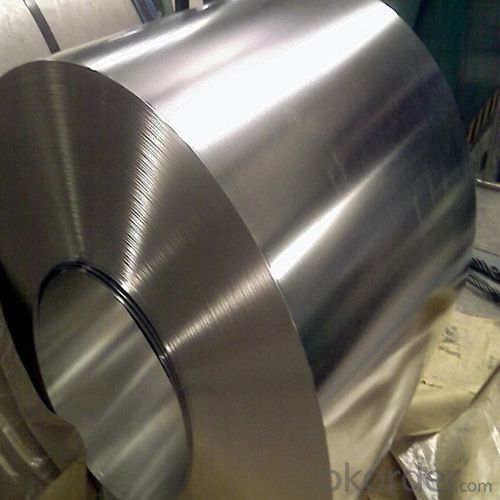
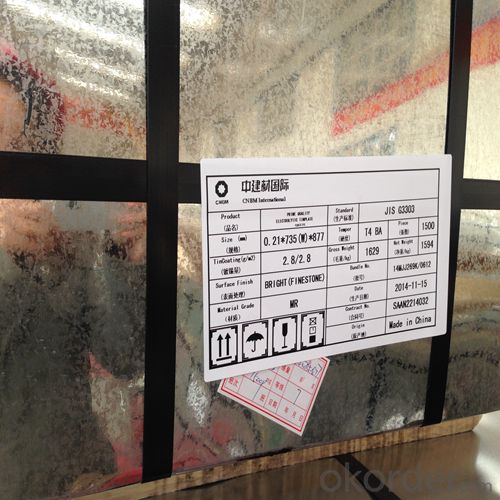
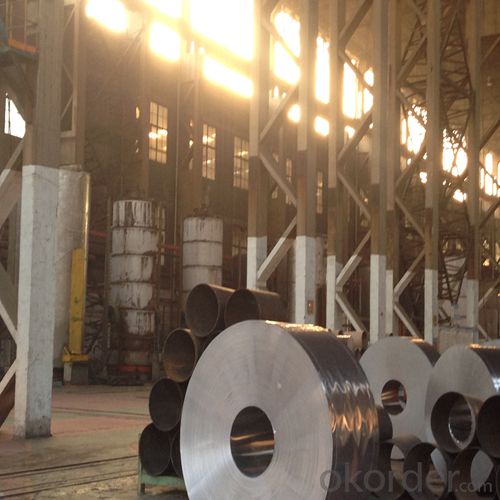
4.Electrolytic Tinplate in Coils for Foods and Chemical Tin Cans Making Specification
Standard | ISO 11949 -1995, GB/T2520-2000,JIS G3303,ASTM A623, BS EN 10202
|
Material | MR,SPCC |
Thickness | 0.15mm - 0.50mm |
Width | 600mm -1150mm |
Temper | T1-T5 |
Annealing | BA & CA |
Coil Inner Diameter | 508mm |
Weight | 6-10 tons/coil 1~1.7 tons/sheets bundle |
Passivation | 311 |
Oil | DOS |
Surface | Finish,bright,stone,matte,silver |
5.FAQ of Electrolytic Tinplate in Coils for Foods and Chemical Tin Cans Making
- How are the Electrolytic Tin Plates specified?
The Electrolytic Tin Plates are specified as per the steel base, extent of tempering, the coating weight, annealing method and the surface finish.
- How many types there are for base steels?
- How is your quality ?
All our quality is prime even the secondary quality . We have many years experience
In this field with serious quality control standard . Advanced equipment, We welcome your visit to our factory .
- Q: How does tinplate affect the overall barrier properties of packaging?
- Tinplate enhances the overall barrier properties of packaging by providing a protective layer that prevents oxygen, moisture, and light from permeating through the packaging material. This helps in preserving the quality, freshness, and shelf-life of the packaged products. Tinplate also adds strength and durability to the packaging, ensuring that it can withstand external pressures and maintain its integrity during transportation and storage.
- Q: Can tinplate be welded or soldered?
- Yes, tinplate can be welded or soldered.
- Q: What are the different types of tinplate cans available?
- There are several different types of tinplate cans available, including round cans, rectangular cans, square cans, and specialty shaped cans such as oval or hexagonal. These cans come in various sizes to accommodate different products and can be found with different closures, such as pull-tab lids or screw-on caps. Additionally, tinplate cans can also be categorized based on their usage, such as food cans, beverage cans, or aerosol cans.
- Q: Can tinplate be used for packaging baby food and formula?
- Yes, tinplate can be used for packaging baby food and formula. Tinplate is a type of steel coated with a thin layer of tin, which provides a protective barrier against moisture, odors, and contaminants. It is considered a safe and suitable material for packaging sensitive products like baby food and formula, as it helps to preserve the quality and freshness of the contents while ensuring the safety and health of infants.
- Q: What are the benefits of using tinplate for kitchenware?
- Using tinplate for kitchenware offers several benefits. Firstly, tinplate is highly resistant to corrosion, ensuring the longevity and durability of kitchen utensils. It also provides a non-reactive surface, meaning that it does not interact with food or alter its taste, ensuring the safety and quality of meals. Additionally, tinplate is lightweight, making it easy to handle and maneuver while cooking. It also has excellent heat conductivity, allowing for even heat distribution and efficient cooking. Overall, the use of tinplate in kitchenware guarantees a reliable and efficient cooking experience.
- Q: Is to buy canned tinplate or aluminum
- Buy tinplate, aluminum toxic, not good
- Q: Is tinplate suitable for hot or cold food products?
- Tinplate is suitable for both hot and cold food products.
- Q: What are the main factors affecting tinplate coil surface quality?
- The main factors affecting tinplate coil surface quality include the quality of the raw materials used, the manufacturing process, the level of cleanliness and maintenance in the production environment, the handling and storage conditions, and the presence of any external contaminants or defects.
- Q: Can tinplate be used for military applications?
- Yes, tinplate can be used for military applications. Its durability and corrosion resistance make it suitable for various military equipment and components such as ammunition boxes, fuel cans, and armor plating. Additionally, its ability to withstand extreme temperatures and provide electromagnetic shielding further enhances its utility in military applications.
- Q: What are the main applications of tinplate in the household goods industry?
- Tinplate is mainly used in the household goods industry for packaging food and beverages, such as canned goods, coffee, tea, and powdered milk. It provides a protective barrier against moisture, air, and light, ensuring the quality and freshness of the products. Additionally, tinplate is also used for making various household items like kitchen utensils, storage containers, and decorative items due to its durability and corrosion resistance properties.
Send your message to us
Electrolytic Tinplate in Coils for Foods and Chemical Tin Cans Making
- Loading Port:
- Tianjin
- Payment Terms:
- TT OR LC
- Min Order Qty:
- 25 m.t
- Supply Capability:
- 7000 m.t/month
OKorder Service Pledge
OKorder Financial Service
Similar products
Hot products
Hot Searches
Related keywords


